These impressive bank buildings are located on the east side of Yonge Street, across from the Eaton Centre. When the above photo was taken, the famous Colonial Tavern was situated between the two banks. The Colonial was demolished in 1987, and for the past few years, a small green space has occupied the site. The structure on the south side of the Colonial Tavern (right-hand side) was for many decades was a branch of the Bank of Commerce. The bank building to the north (left-hand side) of the Colonial tavern was the Bank of Toronto. The above photo is from the City of Toronto Archives.
This photo shows the two former bank buildings in 2013. The space once occupied by the Colonial Tavern is vacant.
This is the old Bank of Commerce building as it appears today (2013). The former bank is presently the showroom and sales office for the 60-storey Massey Tower condominium project. It is to be constructed to the rear of the old bank, the former bank becoming the Yonge Street entrance to the new condo residences.
The Bank of Commerce (later the CIBC) at 197 Yonge Street has now passed the century mark, as it was completed in 1905. It was designed by the architects Darling and Pearson, the same firm that designed the 1929 Bank of Commerce Building on King Street, which for many years was the tallest building in the British Empire. It is today the north tower of Commerce Court. For a link to a post about the history of this Toronto landmark, follow the link: https://tayloronhistory.com/2013/02/18/torontos-architectural-gemsthe-bank-of-commerce-cibc-on-king-street/
The impressive old Bank of Commerce on Yonge Street was created in the Beaux Arts style, containing Classical detailing. The two centre columns of the portico are Ionic in design. The two pilasters on the ends of the structure are Doric, with the Greek egg-and-dart design added. Above these pilasters are the dates the bank of Commerce was founded (1867, and is on the left-hand side) and the year the bank was built (1905, on the right-hand side).
The bank is four storeys in height, the top floor being behind the pediment, which is the Greek triangle above the pillars. The building’s facade is of Ohio sandstone and is recessed behind the portico (porch), which dominates the front of the structure. The sides of the building are brick. The building was vacated in 1987, so is presently in poor condition. It will require extensive work to restore it to its former grandeur.
This photo shows the facade of the bank that faces Yonge Street and the north wall that overlooks the small park between the two banks. The windows, on the fourth floor are also visible.
Classical ornamentation in the interior banking hall.
Mosaic tiles on the floor of the 1905 Bank of Commerce building
To view the Home Page for this blog: https://tayloronhistory.com/
Links to other posts about the history of Toronto and its buildings:
https://tayloronhistory.com/2013/10/08/links-to-historic-architecture-of-torontotayloronhistory-com/
Links to posts about Toronto’s movie houses—past and present.
https://tayloronhistory.com/2013/10/09/links-to-toronto-old-movie-housestayloronhistory-com/
Recent publication entitled “Toronto’s Theatres and the Golden Age of the Silver Screen,” by the author of this blog. The publication explores 50 of Toronto’s old theatres and contains over 80 archival photographs of the facades, marquees and interiors of the theatres. It also relates anecdotes and stories from those who experienced these grand old movie houses.
To place an order for this book:
Theatres Included in the Book
Chapter One – The Early Years—Nickelodeons and the First Theatres in Toronto
Theatorium (Red Mill) Theatre—Toronto’s First Movie Experience and First Permanent Movie Theatre, Auditorium (Avenue, PIckford), Colonial Theatre (the Bay), thePhotodome, Revue Theatre, Picture Palace (Royal George), Big Nickel (National, Rio), Madison Theatre (Midtown, Capri, Eden, Bloor Cinema, Bloor Street Hot Docs), Theatre Without a Name (Pastime, Prince Edward, Fox)
Chapter Two – The Great Movie Palaces – The End of the Nickelodeons
Loew’s Yonge Street (Elgin/Winter Garden), Shea’s Hippodrome, The Allen (Tivoli), Pantages (Imperial, Imperial Six, Ed Mirvish), Loew’s Uptown
Chapter Three – Smaller Theatres in the pre-1920s and 1920s
Oakwood, Broadway, Carlton on Parliament Street, Victory on Yonge Street (Embassy, Astor, Showcase, Federal, New Yorker, Panasonic), Allan’s Danforth (Century, Titania, Music Hall), Parkdale, Alhambra (Baronet, Eve), St. Clair, Standard (Strand, Victory, Golden Harvest), Palace, Bedford (Park), Hudson (Mount Pleasant), Belsize (Crest, Regent), Runnymede
Chapter Four – Theatres During the 1930s, the Great Depression
Grant ,Hollywood, Oriole (Cinema, International Cinema), Eglinton, Casino, Radio City, Paramount, Scarboro, Paradise (Eve’s Paradise), State (Bloordale), Colony, Bellevue (Lux, Elektra, Lido), Kingsway, Pylon (Royal, Golden Princess), Metro
Chapter Five – Theatres in the 1940s – The Second World War and the Post-War Years
University, Odeon Fairlawn, Vaughan, Odeon Danforth, Glendale, Odeon Hyland, Nortown, Willow, Downtown, Odeon Carlton, Donlands, Biltmore, Odeon Humber, Town Cinema
Chapter Six – The 1950s Theatres
Savoy (Coronet), Westwood
Chapter Seven – Cineplex and Multi-screen Complexes
Cineplex Eaton Centre, Cineplex Odeon Varsity, Scotiabank Cineplex, Dundas Square Cineplex, The Bell Lightbox (TIFF)
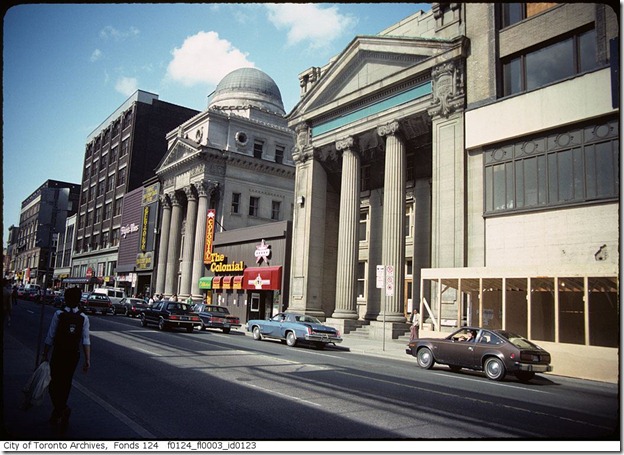
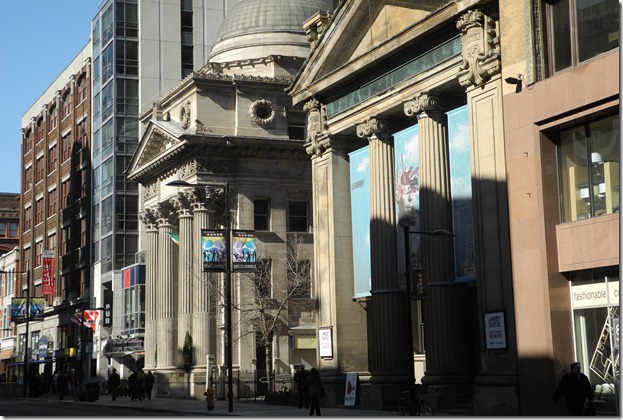
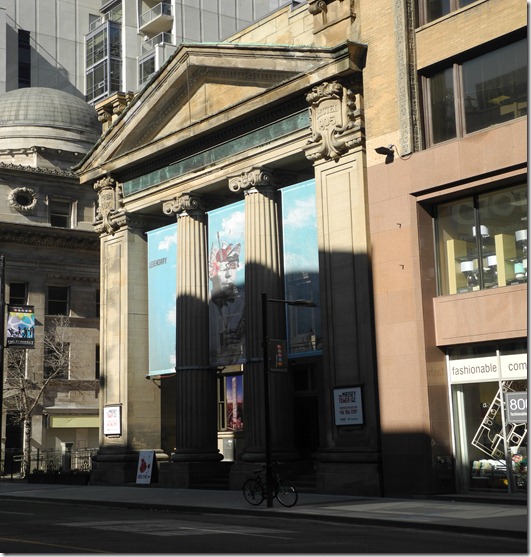
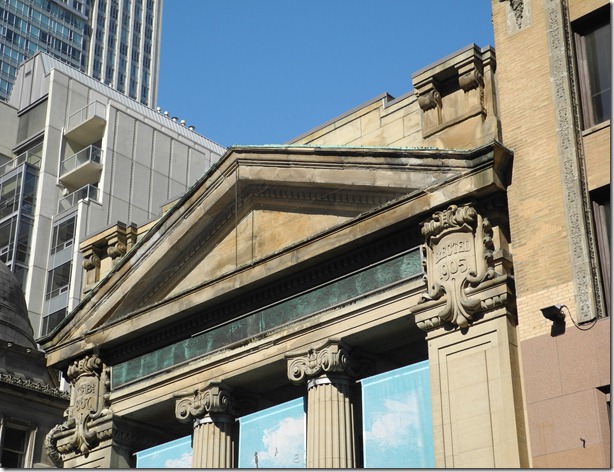
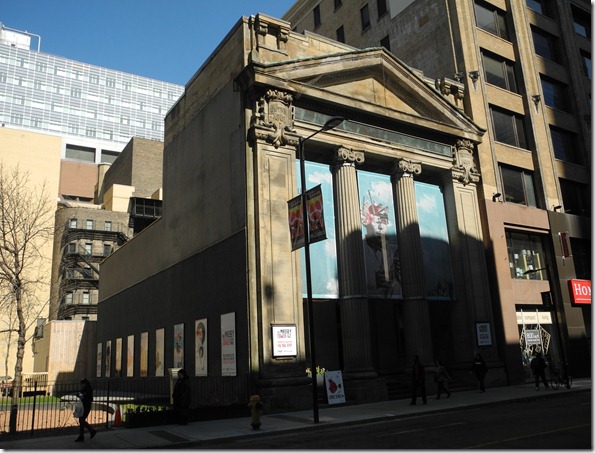
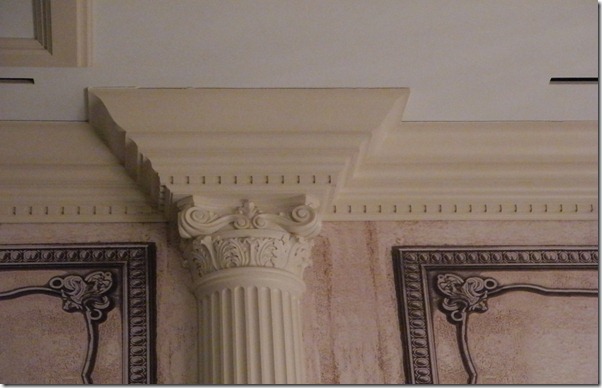
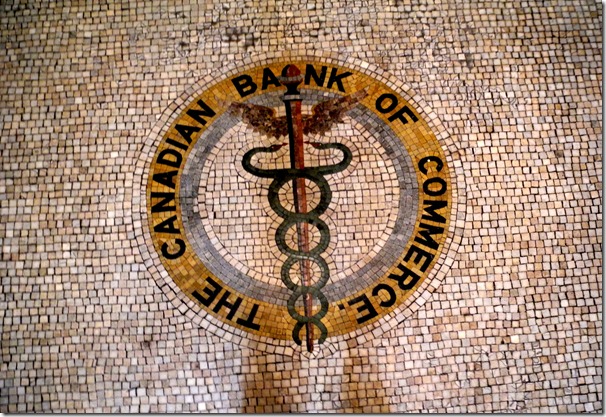
![cid_E474E4F9-11FC-42C9-AAAD-1B66D852[2] cid_E474E4F9-11FC-42C9-AAAD-1B66D852[2]](https://tayloronhistory.com/wp-content/uploads/2014/09/cid_e474e4f9-11fc-42c9-aaad-1b66d8522_thumb22.jpg)

